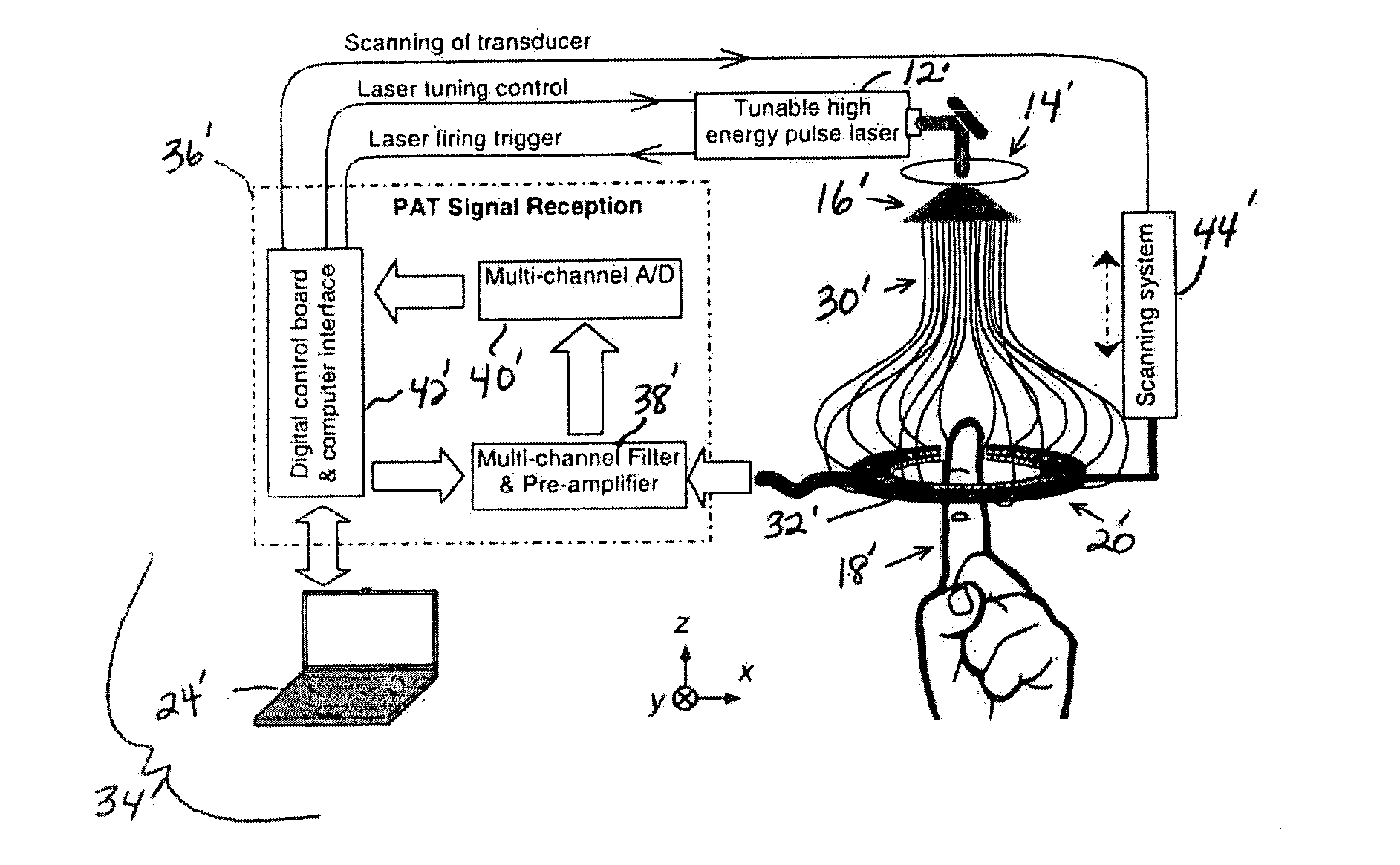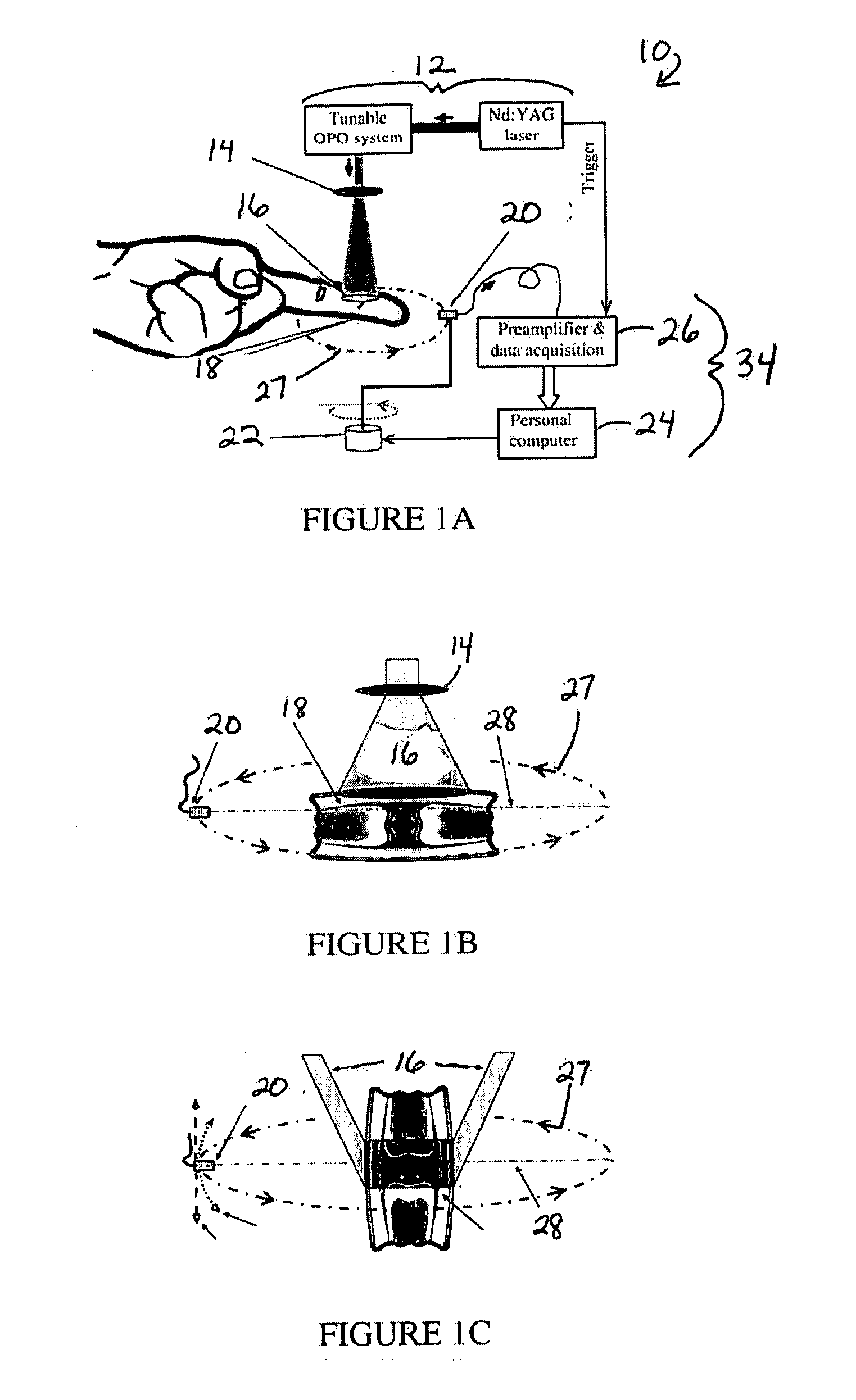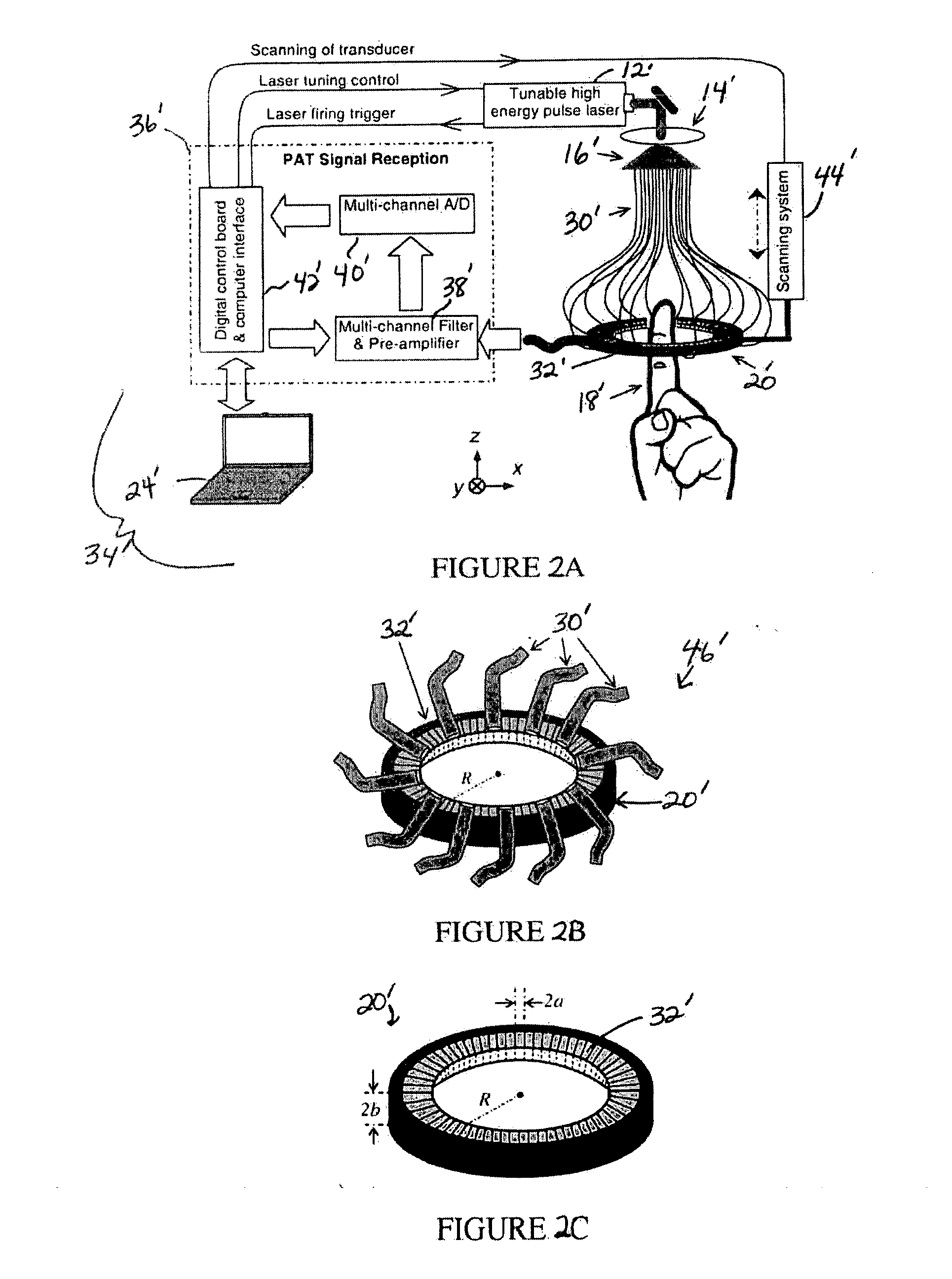System and method for photoacoustic tomography of joints
a photoacoustic tomography and sample technology, applied in the field of system and method of photoacoustic tomography of samples, can solve the problems of low spatial resolution of traditional optical imaging modalities, irreversible structural injury, and demonstrating the time-integrated record of joint damag
- Summary
- Abstract
- Description
- Claims
- Application Information
AI Technical Summary
Problems solved by technology
Method used
Image
Examples
Embodiment Construction
[0033]As required, detailed embodiments of the present invention are disclosed herein; however, it is to be understood that the disclosed embodiments are merely exemplary of the invention that may be embodied in various and alternative forms. The figures are not necessarily to scale, some features may be exaggerated or minimized to show details of particular components. Therefore, specific structural and functional details disclosed herein are not to be interpreted as limiting, but merely as a representative basis for teaching one skilled in the art to variously employ the present invention.
[0034]The present invention includes a system and method for PAT of joints. Optical signals employed in PAT to generate ultrasonic waves are sensitive to molecular conformations of biological tissues including both deoxy- and oxy-hemoglobin, as well as to soft tissue changes such as hypervascularization. Both abnormal oxygen state and, as a consequence of increased angiogenesis, hypervascularizat...
PUM
| Property | Measurement | Unit |
|---|---|---|
| imaging depth | aaaaa | aaaaa |
| tunable wavelength | aaaaa | aaaaa |
| tunable wavelength | aaaaa | aaaaa |
Abstract
Description
Claims
Application Information
 Login to View More
Login to View More - R&D
- Intellectual Property
- Life Sciences
- Materials
- Tech Scout
- Unparalleled Data Quality
- Higher Quality Content
- 60% Fewer Hallucinations
Browse by: Latest US Patents, China's latest patents, Technical Efficacy Thesaurus, Application Domain, Technology Topic, Popular Technical Reports.
© 2025 PatSnap. All rights reserved.Legal|Privacy policy|Modern Slavery Act Transparency Statement|Sitemap|About US| Contact US: help@patsnap.com



